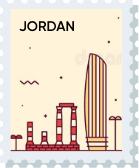Mastering React Pagination: 4 Methods with Full Code Examples

Pagination is a technique, using which you can divide large amounts of data into pages for a cleaner display and smoother navigation in a website or an app. It makes navigation much easier with buttons to go forward, backward, or jump to a specific page.
What is React Pagination?
Even a simple and straightforward React app may collect a good amount of data that should be displayed in a user-friendly manner. The two main challenges that need to be addressed are:
- Ensuring a good user experience, because users like to consume data in a well-organized manner and don’t like to feel overwhelmed with huge sets of data all displayed at once.
- Maintaining faster page load times, because rendering all datasets at once can cause the website to load slowly or even cause it to crash.

React Pagination can solve these issues by splitting huge data into separate sections and displaying each section on a separate page, while also providing buttons for easier navigation. This way, the user sees only a small chunk of data, as it breaks up the amount of data that needs to be loaded for each page, improving the overall browsing experience for the user.
Pagination may vary in design and approach, but one example which you can notice almost every time you open the internet is the “Google search results page”. It displays a huge amount of data under separate sections with buttons “next” and “previous”, enabling users to jump to specific pages.
Our company provides API integration services, call now to learn more.
Implementing React Pagination
There are four common methods to implement React Pagination:
- Vanilla React: Client Side Pagination
- Vanilla React: Server Side Pagination
- React Paginate Library
- React Query Pagination
1) Vanilla React: Client Side Pagination
Client side pagination means that the whole dataset from the server is sent to the client (user’s device) before splitting it up into separate pages.
How it works:
- Fetch the entire dataset from the server and display it in a single page.
- Store the data in the React state.
- Determine the total number of pages based on the available dataset and desired page size.
- Use JavaScript to display only a small chunk of data corresponding to the current page.
- Update the page view whenever the user switches to a different page.
Example: Imagine you have 1000 user entries, which you want to display 10 on each page. Instead of making a server request for every page, React fetches all 1000 entries at once, stores them, and divides them into 100 pages. The application simply updates the data whenever the user navigates between pages.
Pros of client side pagination:
- Though the initial loading will be slow, subsequent page renders will take place quickly as the data is already fetched on the client-side.
- Searching, filtering, and sorting processes will be comparatively quicker for a smaller number of datasets. (like 500 entries)
- Only a single API call is made to fetch the data and no other API calls are needed.
Cons of client side pagination:
- The initial load time is longer.
- As the data increases, the load time also increases.
- Data inconsistency will be there as all the data is fetched at once. If there is an update in the backend, it will not get reflected in the UI until we refresh the page.
- If the data size increases, the process of searching, sorting, and filtering becomes a time-consuming process.
Use client side pagination when,
- The data size is smaller
- Your app/website can take some time for initial loading, but needs to act much faster while displaying subsequent sets of data
Partner with a React JS development company to implement the best Pagination practices.
2) Vanilla React: Server Side Pagination
The cons of client-side pagination clearly show that this method is inefficient since it requires loading the full dataset every time a page loads. Downloading such a large amount of data may slow down individual page loads, and as the data size increases further, it can even make your app/website unresponsive.
Server side pagination solves this problem. The data is divided into multiple parts at the server end itself. You pass pagination details to the API endpoint as a query, and it returns the specific set of data only.
For example if you created a query request to retrieve all data records, with 10,000 of them in total, only 100 of them will be returned to the front end. To obtain the subsequent batch of records, another API request is issued. It is just like ordering only what’s needed at a particular point of time, and then making another set of order requests if required.
Pros of server-side pagination:
- Initial loading time is less as only a small set of data is being returned from the server.
- No or very few chances of loading inconsistent data.
- Performance remains stable even if the application and amount of data grow bigger.
- Can handle millions of data records without impacting the performance.
- Works better with complex datasets.
- Loads only the required set of data on the client side.
Cons of server-side pagination:
- You have to make lots of API calls to fetch data.
- Every page loading time is equal, whereas in client-side pagination, only the initial loading time was slow.
Use server-side pagination when,
- The data size is large.
- You need to display consistently, always (stock market data)
- You require a quick initial loading speed
Hire ReactJS developers to implement pagination in your app.
3) React Paginate Library
The react paginate library is especially designed to handle the UI side of pagination. It contains additional features than Vanilla React. Users get a dropdown button to choose the number of items they want to display per page, next and previous buttons, and page number display when the number of pages becomes too many to keep track.
Pros of React paginate library:
- Easier to implement, developers don’t need to implement manual pagination logic
- Highly customizable, allows customization of the UI
- Supports client and server side pagination, thereby giving benefits of both
- Built-in support for better accessibility
Cons of React paginate library:
- It offers basic styling, deep customization would require making extra efforts
- Handles only UI pagination, you have to manually handle the fetched data from the backend
- Ideal for traditional pagination, not for infinite scrolling cases
Use React Paginate when:
- You need a quick pagination solution without building everything from scratch
- The amount of data is too large to get a good loading speed
- Your app follows a page-based navigation system instead of infinite scrolling
4) React Query Pagination
React Query simplifies the process of pagination by effectively managing data fetching, caching etc automatically. It enables an easy pagination without manually handling API calls.
Pros of React Query pagination:
- It fetches the required data automatically when the page changes.
- Built-in features to store the data from previous pages to prevent unnecessary API calls.
- It gives an option of “load more” to support infinite scrolling.
- Keeps the paginated data updated in the background.
Cons of React Query pagination:
- React query increases the JavaScript bundle size, which might impact the speed in extensive applications.
Pagination or Infinite Scroll? Which One Would You Prefer?
Infinite scroll is when the content in an application automatically loads as the user keeps scrolling down the screen. Social media platforms like Instagram and Facebook commonly use this feature, and ecommerce stores also encourage users to scroll until the end. While on the other side, pagination divides a full set of data into smaller chunks and displays it in the form of separate pages. It is the right choice for most of the websites, including online retail, search engines, and job listing pages, etc.
Conclusion
When you have too much data at your disposal, you need pagination to display it nicely and maintain a decent user experience. The most important concern while deciding the method of pagination, as well as how the UI should behave, is to think about your users. Research about what they are looking to achieve with your app and then tailor the experiences according to their expectations.
If you feel overwhelmed with the methods discussed above, contact us to learn more about React Pagination and custom software development services. We can schedule a meeting and discuss your project.

Have an idea?
Get in touch, we’d be
happy to hear from you
We are always looking out for new collaborations, whether you are a client who is passionate about a project or a talent who is interested in joining our team, our doors are always open.
locate us

India (HQ)
618, Shekhar Central, Palasia Square, A.B Road, Indore, Madhya Pradesh, 452001
+918109561401

United Kingdom
Brain Inventory, SBVS, 8 Roundhay Road, Leeds, UK, LS7 1AB
+18008209286

Canada
44 Main Street East Milton, ONCanada L9T 1N3
+4166696505

Jordan
185 Wasfi Al-Tal Street, Ammon Oasis Complex P.O Box 4724 Amman 11953 Jordan
+960770781000

USA
720 Seneca St Ste 107 Seattle, USA 98101
+1(206)6533419
if it's digital,we'll make it.
- Numetric - Online Accounting Software similar to QuickBooks
- Bloomia - Kegel exercise
- Virifi - Blockchain Powered Document Certification & Signing Platform
- Revolution Travel CRM - Custom CRM Built for Travel Agents
- Fatoura - Online Invoicing Platform
- My Fit Mantra - Your health partner
- Ocureel - Relation Building and video sharing Application